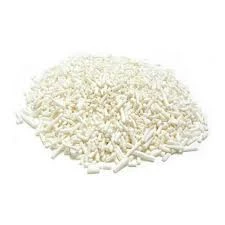
Exploring E319 Food Additive Its Uses and Potential Health Impacts
Understanding E319 Food Additive or Potential Risk?
Food additives play a critical role in the modern food industry, serving various functions such as preservation, coloring, flavor enhancement, and texture improvement. Among these additives, E319, also known as tert-butylhydroquinone (TBHQ), has garnered attention for its role in food preservation and some concerns over its safety.
What is E319?
E319 is a synthetic antioxidant used primarily to prevent the oxidation of fats and oils in food products. It is particularly effective in products that are rich in fats, such as snacks, margarine, and cooking oils. By inhibiting the oxidation process, E319 helps extend the shelf life of food, preventing rancidity and maintaining flavor integrity. This characteristic is crucial in a world where food spoilage can lead to significant waste and economic losses.
Benefits of E319
One of the primary advantages of E319 is its effectiveness in preserving food quality. In a time where consumers demand convenient and long-lasting products, additives like E319 become essential in meeting these expectations. It allows manufacturers to provide products that remain fresher for longer periods without the need for more invasive preservation techniques. Additionally, using antioxidants like TBHQ can help maintain the nutritional quality of food by protecting sensitive vitamins from degradation caused by oxidation.
Safety Concerns and Regulations
e319 food additive

Despite its efficacy as a preservative, E319 has faced scrutiny regarding its safety. Some studies have suggested a potential link between high consumption of TBHQ and various health issues, including tumor formation in laboratory animals. However, regulatory bodies such as the European Food Safety Authority (EFSA) and the U.S. Food and Drug Administration (FDA) have deemed E319 safe for consumption within specified limits. The acceptable daily intake (ADI) for TBHQ is set to ensure that it poses minimal risk to human health when consumed as part of a balanced diet.
It is important to note that the safety assessments conducted by these agencies consider a wide range of factors, including the levels of consumption in typical diets and the potential exposure from multiple sources. As a result, while E319 is deemed safe in moderate amounts, consumers are encouraged to remain informed about the food additives present in their diets and make choices that align with their health goals.
Consumer Awareness and Labels
In recent years, there has been a growing movement advocating for transparency in food labeling. Many consumers are becoming increasingly health-conscious, leading to a demand for products free from synthetic additives. As a result, some manufacturers have started to reformulate their products using natural preservatives rather than synthetic ones like E319. This shift reflects a broader trend towards clean eating and a desire for more recognizable ingredients in food products.
Conclusion
E319, or tert-butylhydroquinone, remains a common food additive in the food industry, valued for its ability to extend shelf life and preserve food quality. While its safety has been established by regulatory bodies, ongoing research and consumer reactions illustrate the complexities surrounding food additives. As consumers, it is essential to be aware of the ingredients in our food and make informed choices based on personal health preferences and dietary needs. Education and transparency in food labeling will continue to play a key role in shaping the future of food additives like E319.
-
Industrial Chemicals: Quality & Purity for Every IndustryNewsAug.28,2025
-
Nitrile Rubber Honoring Strict Production StandardsNewsAug.22,2025
-
Aspartame Ingredients Honoring Food Safety ValuesNewsAug.22,2025
-
Fertilizer for Balanced Plant NutritionNewsAug.22,2025
-
Cyanide Gold Processing with High Purity AdditivesNewsAug.22,2025
-
Formic Acid in Textile Dyeing ApplicationsNewsAug.22,2025
-
Aluminum Hydroxide Gel in Skincare ProductsNewsAug.22,2025
Hebei Tenger Chemical Technology Co., Ltd. focuses on the chemical industry and is committed to the export service of chemical raw materials.
-

view more DiethanolisopropanolamineIn the ever-growing field of chemical solutions, diethanolisopropanolamine (DEIPA) stands out as a versatile and important compound. Due to its unique chemical structure and properties, DEIPA is of interest to various industries including construction, personal care, and agriculture. -

view more TriisopropanolamineTriisopropanolamine (TIPA) alkanol amine substance, is a kind of alcohol amine compound with amino and alcohol hydroxyl, and because of its molecules contains both amino and hydroxyl. -

view more Tetramethyl Thiuram DisulfideTetramethyl thiuram disulfide, also known as TMTD, is a white to light-yellow powder with a distinct sulfur-like odor. It is soluble in organic solvents such as benzene, acetone, and ethyl acetate, making it highly versatile for use in different formulations. TMTD is known for its excellent vulcanization acceleration properties, which makes it a key ingredient in the production of rubber products. Additionally, it acts as an effective fungicide and bactericide, making it valuable in agricultural applications. Its high purity and stability ensure consistent performance, making it a preferred choice for manufacturers across various industries.





